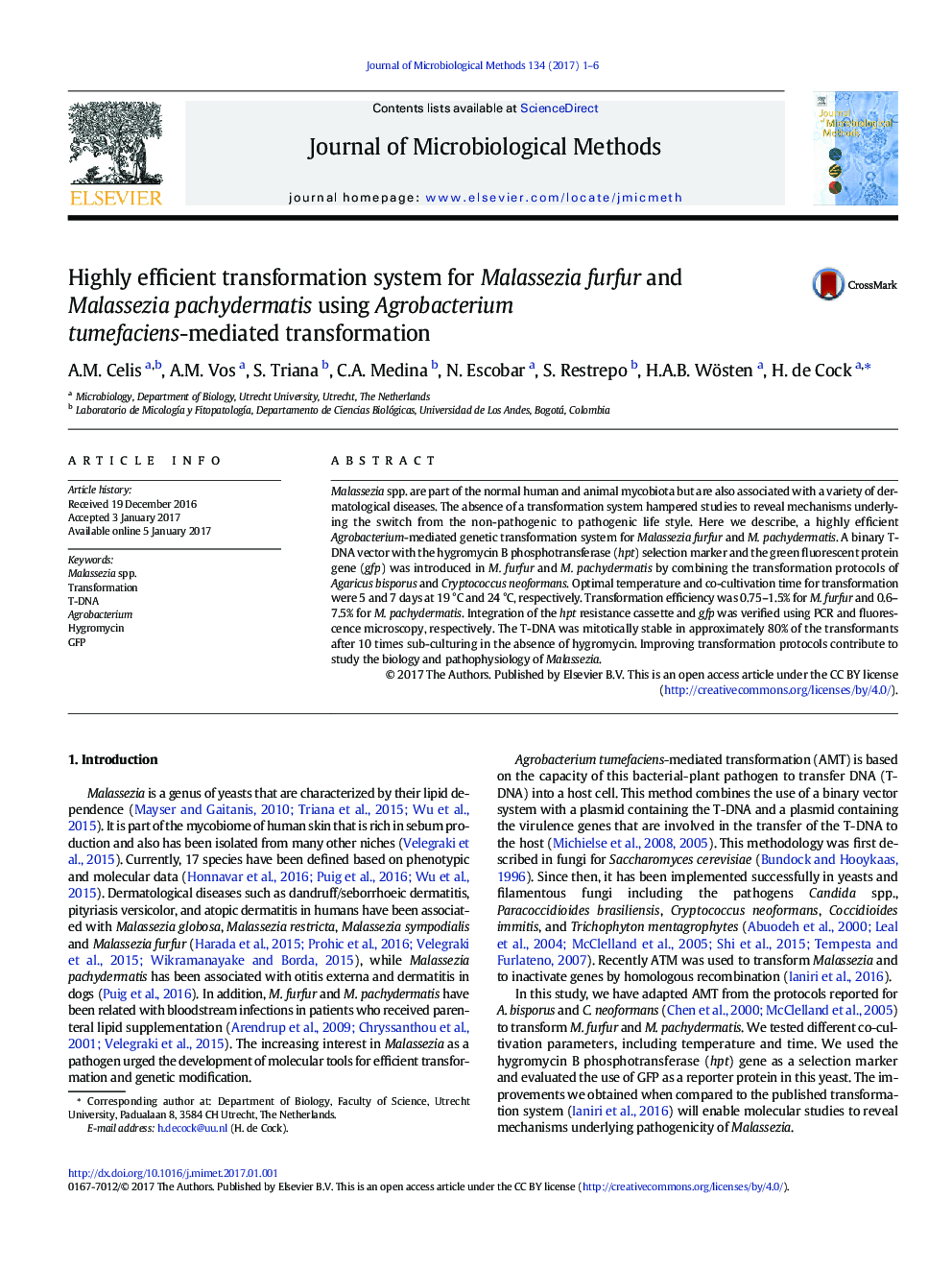| Article ID | Journal | Published Year | Pages | File Type |
|---|---|---|---|---|
| 5522384 | Journal of Microbiological Methods | 2017 | 6 Pages |
Malassezia spp. are part of the normal human and animal mycobiota but are also associated with a variety of dermatological diseases. The absence of a transformation system hampered studies to reveal mechanisms underlying the switch from the non-pathogenic to pathogenic life style. Here we describe, a highly efficient Agrobacterium-mediated genetic transformation system for Malassezia furfur and M. pachydermatis. A binary T-DNA vector with the hygromycin B phosphotransferase (hpt) selection marker and the green fluorescent protein gene (gfp) was introduced in M. furfur and M. pachydermatis by combining the transformation protocols of Agaricus bisporus and Cryptococcus neoformans. Optimal temperature and co-cultivation time for transformation were 5 and 7 days at 19 °C and 24 °C, respectively. Transformation efficiency was 0.75-1.5% for M. furfur and 0.6-7.5% for M. pachydermatis. Integration of the hpt resistance cassette and gfp was verified using PCR and fluorescence microscopy, respectively. The T-DNA was mitotically stable in approximately 80% of the transformants after 10 times sub-culturing in the absence of hygromycin. Improving transformation protocols contribute to study the biology and pathophysiology of Malassezia.
